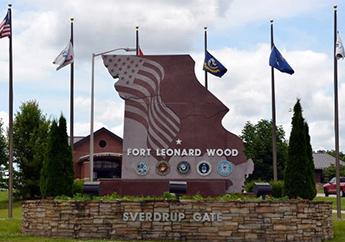


Federal facilities are currently or previously owned or operated U.S. government properties where hazardous (chemical and radiological) substances have been or could potentially be released to the environment, contaminating the soil, water and air, and threatening public health and the environment. The majority of these sites were owned or operated by the U.S. Department of Defense (DOD) and the U.S. Department of Energy (DOE). Just like other hazardous waste contaminated sites, DOD and DOE are required to investigate and clean up hazardous substance releases to the environment from facilities they currently or previously owned or operated.
In 1993, in response to requests from DOD and DOE, the department created its Federal Facilities Section to provide oversight for site management, investigations and cleanup of federal facilities in Missouri. The department's Federal Facilities Section addresses DOD and DOE's specific needs as they relate to each individual site. It also provides guidance to ensure that activities conducted at the sites follow both state and federal environmental laws and regulations. The department's ultimate goal is to ensure facilities meet environmental standards and are returned to productive public- or private-sector reuse.

